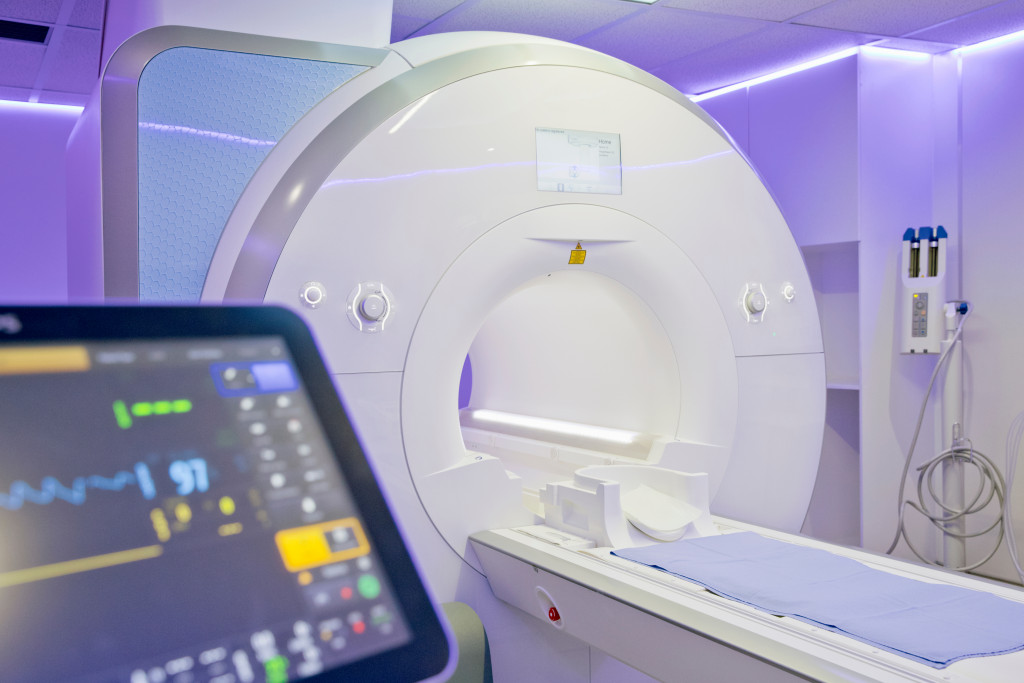- Robotics can assist healthcare workers with tedious tasks and provide more precise and accurate surgeries.
- Telemedicine enables remote monitoring of patient health and access to specialists from rural areas.
- Reliable monitoring systems use sensors to measure and monitor vital signs for remote diagnosis.
- AI can create diagnostic tools and use predictive analytics to anticipate conditions and suggest preventative measures.
- Medical innovation is revolutionizing healthcare, making it more efficient, accessible, and cost-effective.
Advances in medical technology have changed the landscape of patient care for the better. In recent years, medical innovations have revolutionized medicine and improved the quality of life for countless individuals. These new technologies are making healthcare more efficient and accessible than ever before. Here’s a look at some of the top medical innovations currently transforming patient care.

Robotics
Robots are quickly becoming a major part of modern-day healthcare. Robots can assist healthcare workers with tedious tasks such as checking vital signs and diagnostics. They can also help transport patients from one location to another, assisting with rehabilitation and physical therapy exercises.
Accuracy and Precision
Robotic systems can even be used to perform complex surgeries with more precision and accuracy. Robots with advanced AI capabilities are being developed to understand voice commands and complete sophisticated tasks autonomously. As robots become smarter, they will play an increasingly important role in providing quality patient care in hospitals around the world.
Limitless Potential
The potential of robotics in healthcare is nearly limitless. In the future, robots may help with diagnostics and treatment. They could be used to provide personalized care tailored to each patient, offering support and guidance during recovery. They could also be used to deliver medicines or perform routine exams remotely. As technology evolves, robotic solutions will likely become increasingly sophisticated and more commonplace in healthcare settings.
Revolutionize Healthcare
Robotics is an emerging field with the potential to revolutionize healthcare. Robots may assist healthcare workers with routine tasks, provide personalized care tailored to individual patients, and even perform complex surgeries autonomously. With the right technology and support, robotics could soon become an integral part of modern healthcare.
Telemedicine
Telemedicine involves using digital technology to provide remote patient monitoring and remote consultations for those who cannot be physically present in a hospital setting. This technology enables doctors to monitor their patient’s health remotely via video or audio conferencing, email exchanges, text messages, or other forms of digital communication.
Quick Diagnoses
With telemedicine, doctors can provide quick diagnoses without having to arrange an appointment for their patients, which saves time and money for both parties involved. Telemedicine also expands access to healthcare services by allowing people living in rural areas to receive treatment from specialists hundreds of miles away without traveling long distances or waiting weeks for an appointment.
Cost Efficiency
Telemedicine also offers cost efficiency for both healthcare providers and patients. Because telemedicine visits are shorter than traditional office visits, healthcare providers can reduce their overhead costs by having fewer staff members. Patients also save on transportation costs and time traveling to see a doctor.
Patient Monitoring
Medical facilities can also implement a reliable remote patient management system. The system monitors the status of patients even if they are not in a hospital. The system should facilitate the monitoring of patients even without using an app. Devices such as sensors can measure and monitor vital signs like temperature, pulse rate, and even oxygen levels. This helps doctors with remote diagnosis and treatment of the patient in real-time.

Artificial Intelligence (AI)
Artificial Intelligence (AI) is becoming increasingly popular among healthcare providers because it has the potential to revolutionize patient care by providing accurate diagnoses faster than traditional methods while simultaneously reducing costs associated with labor-intensive processes such as data entry and analysis.
Learning from Past Experience
AI systems can “learn” from past experiences to make better decisions going forward; this enables them to accurately diagnose conditions based on data gathered from previous diagnoses more quickly and efficiently than humans could ever do alone. Additionally, AI systems can use predictive analytics to anticipate what conditions may arise in the future and suggest preventative measures that healthcare providers should take accordingly.
AI-Powered Diagnostic Tools
AI can also be used to create diagnostic tools that detect signs of disease or illness more quickly and accurately than ever before. For example, AI-powered medical imaging software can analyze a patient’s scans and X-rays more swiftly and accurately than humans, leading to faster diagnoses and treatments.
Medical innovation has made it possible for healthcare facilities everywhere to provide better patient care with greater efficiency and accuracy than was previously thought possible. The innovations listed in the article have made it easier for healthcare facilities everywhere to deliver improved quality of care while saving both time and money along the way!








